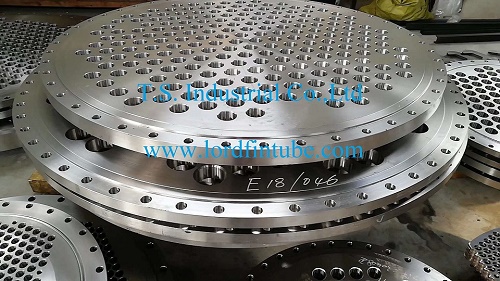Heat exchanger tube sheet and baffle manufacturing
What is Heat exchanger tube sheet?
A heat exchanger tube sheet is a critical component of a shell-and-tube heat exchanger. It is a thick, flat plate that separates the two fluid streams within the heat exchanger. Tube sheets are typically made of a metallic material and have holes or bores drilled into them to accommodate the heat exchange tubes.
How Heat exchanger tube sheet manufactured?
1. Material selection: The tube sheet material is chosen based on factors such as the operating conditions of the heat exchanger, including temperature, pressure, and the corrosive nature of the fluids being exchanged. Common materials used for tube sheets include carbon steel, stainless steel, and various alloys.
2. Cutting and shaping: The selected material is cut into the required size and shape using machining processes like sawing, shearing, or laser cutting.
3. Drilling holes: Holes are drilled into the tube sheet to accommodate the heat exchange tubes. The hole pattern and dimensions are carefully determined to ensure proper alignment and fit of the tubes.
4. Deburring and cleaning: After drilling, the tube sheet is deburred to remove any sharp edges or burrs that could interfere with the installation of the tubes. It is then cleaned to remove any contaminants or debris.
5. Finishing operations: The tube sheet may undergo additional machining processes, such as milling or surface grinding, to achieve the desired smoothness and flatness.
What is heat exchanger baffle?
Heat exchanger baffles are another important component found within shell-and-tube heat exchangers. Baffles are thin plates or disks that are strategically placed within the shell to direct the flow of fluid and enhance heat transfer efficiency. They promote turbulence and prevent the formation of stagnant zones.
How heat exchanger baffle manufactured?
1. Material selection: Baffle materials are chosen based on factors such as temperature, pressure, and corrosion resistance. Common materials include carbon steel, stainless steel, and alloys.
2. Cutting and shaping: Similar to tube sheets, baffles are cut and shaped using processes like sawing, shearing, or laser cutting to achieve the desired size and shape.
3. Drilling or punching holes: Baffles may have holes or slots punched or drilled into them to allow fluid flow. The hole pattern and dimensions are designed based on the specific heat exchanger requirements.
4. Finishing operations: Baffles may undergo additional machining processes to ensure smooth edges, proper fit, and desired surface finish.
Its important to note that the selection of tube sheet and baffle materials depends on the specific application and operating conditions of the heat exchanger. Different materials may be used for different applications to ensure optimal performance and durability.


